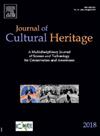Recent advances in the analytical and experimental study of mineralised textiles
IF 3.3
2区 综合性期刊
0 ARCHAEOLOGY
引用次数: 0
Abstract
Mineralised textiles — altered remnants of organic textiles preserved by the diffusion of metallic cations from nearby artefacts or the environment — have gradually emerged as an essential source of information on the production and use of textiles in prehistoric and antique societies, as well as on their implication on the economy, technological developments and trade. In many contexts, they are the only evidence of productions known either indirectly through tools or not at all. In this review, we highlight the contribution of analytical methods in recent years to their study, an evolution that began with the emerging use of optical and then electron microscopy in the 1960s and 1970s. In particular, we describe the most recent period, which has seen (i) the widespread use of digital optical microscopy in laboratories and museums, (ii) the adoption of approaches aimed at characterising molecular signatures, even for highly altered textiles, and (iii) the development of micro-imaging methods, particularly using synchrotron radiation or laser sources. We are finding that these methods are making an increasing contribution to the field of archaeology. We outline possible prospects for the research and documentation of mineralised textiles and the possible impact of imaging methods on museum displays.
矿化纺织品分析与实验研究的最新进展
矿化纺织品——由附近人工制品或环境中的金属阳离子扩散而保存下来的有机纺织品的残余物——已经逐渐成为史前和古代社会纺织品生产和使用的重要信息来源,以及它们对经济、技术发展和贸易的影响。在许多情况下,它们是间接通过工具或根本不知道的生产的唯一证据。在这篇综述中,我们强调了近年来分析方法对它们研究的贡献,这一演变始于20世纪60年代和70年代光学显微镜和电子显微镜的出现。特别是,我们描述了最近的一段时期,这段时期看到了(i)数字光学显微镜在实验室和博物馆的广泛使用,(ii)采用旨在表征分子特征的方法,即使是高度改变的纺织品,以及(iii)微成像方法的发展,特别是使用同步辐射或激光源。我们发现这些方法正在为考古领域做出越来越大的贡献。我们概述了矿化纺织品的研究和记录的可能前景,以及成像方法对博物馆展示的可能影响。
本文章由计算机程序翻译,如有差异,请以英文原文为准。
求助全文
约1分钟内获得全文
求助全文
来源期刊

Journal of Cultural Heritage
综合性期刊-材料科学:综合
CiteScore
6.80
自引率
9.70%
发文量
166
审稿时长
52 days
期刊介绍:
The Journal of Cultural Heritage publishes original papers which comprise previously unpublished data and present innovative methods concerning all aspects of science and technology of cultural heritage as well as interpretation and theoretical issues related to preservation.
 求助内容:
求助内容: 应助结果提醒方式:
应助结果提醒方式:


